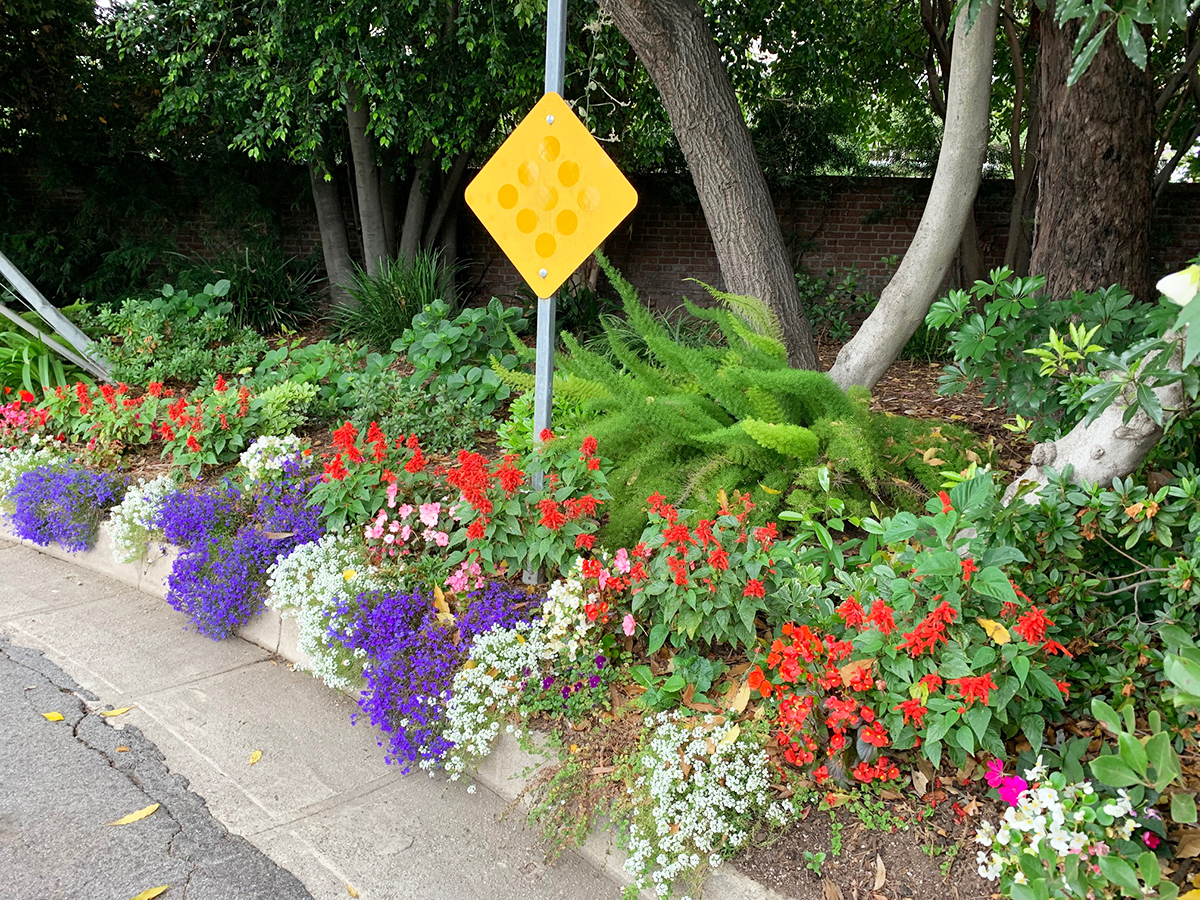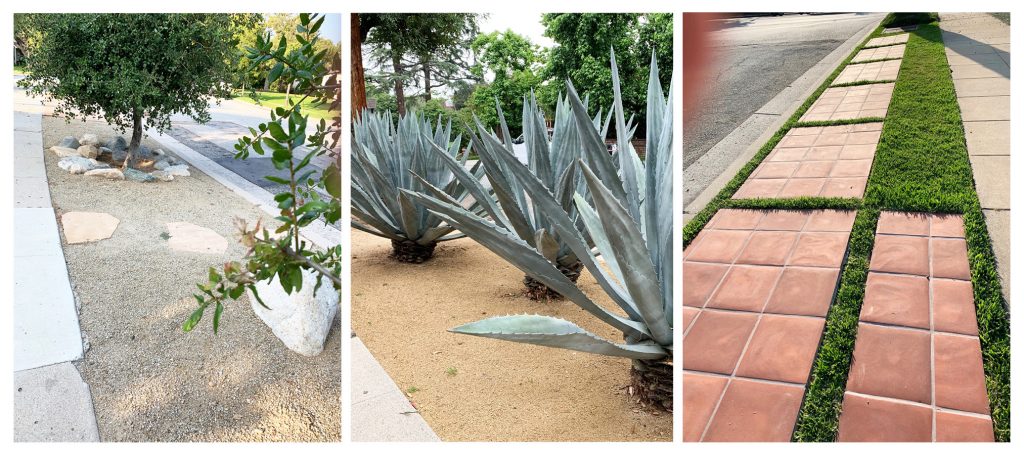
If you’re feeling whimsical, think about a mix of flowering perennials. Or, if you are more of a Georgia O’Keeffe, try something a little daring and unexpected, like the dramatic cactus shown below.
I first heard the term hellstrip when I was editing a garden design book a number of years ago. It embodies the despair that so many of us have felt as yet another hope-filled planting in our parking strip withers and dies. It can feel like a constant battle with tree roots, irrigation challenges, debris from passing cars and people, and that eternal opponent, weeds. And of course, the dogs who pause there to relieve themselves.
In my Southern California neighborhood where I take my daily walks, I’ve been observing how people deal with that problematic strip of land that runs between the sidewalk and the street. Who is responsible for it, anyway? The city? The homeowners?
Most commonly, hellstrips belong to the municipality they’re in, but the property owner has the obligation to maintain them. The city (or HOA) will reserve the right to dig it up any time for any civic purpose, which might not seem like a fair deal for the homeowner. Nevertheless, if you have such a strip in front of your home, it’s best for your soul’s comfort to see it as an opportunity to do something uplifting – or at least neat and tidy – rather than as an eternally cursed piece of land that only dogs can love. I wish you a measure of peace with your hellstrip, and even, dare I say the word, joy.
Herewith, a gallery of some of my neighbors’ hellstrips, for better or worse. Since Southern California is so drought-prone, most of these examples reflect a water-conservation awareness.

A “Southern California Zen” arrangement of gravel, stone and your oak trees (left); cactus plants in a decomposed granite bed (middle); and a pavers and lawn combination (right).
[shareaholic app="share_buttons" id="4643021"]